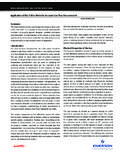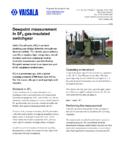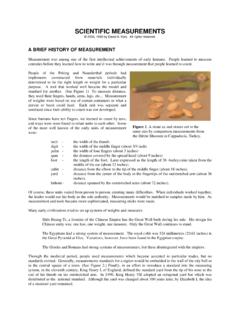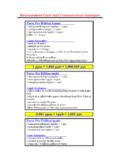Transcription of Measurement Matrix v3 - CIPR Inside
1 InsideCIPRCIPR Inside Communication Measurement MatrixFundamental principles of Measurement Best practice goes beyond the inclusion of a few communication questions in an annual employee engagement survey. Research is part of everyday practice used to establish SMART communication objectives that are output and outcome based, linked to organisational objectives that enhance reputation. Regular and real-time reporting that includes going beyond basic data is used to find insights from deep analysis. Benchmarking helps to put results into by the CIPR Inside Measurement Panel [November 2012]How to measureWhat to measureQuestionnaireOther forms of research OutputsChannels: are they working? How effective are your newsletters, magazines, intranet, social media channels, e-mail briefings, conferences, town hall type meetings, team meetings, project meetings and 1:1s?
2 Is the channel appropriate for the content?Access, usefulness, frequency, volume, analysis. Ease of : are employees getting the information they want and need? Is communication timely, relevant, accurate and consistent? Is the tone of voice right? Is it open? Is it honest? What are employees interested in?How well and how often information is provided. Message recall (for example, using marketing-style analysis). Interest and information levels by : are people communicating effectively? How well do leaders, senior managers, middle managers, line managers and colleagues communicate, both formally and informally?Frequency that people communicate at the level : are there adequate opportunities for people to have a say?
3 How seriously is employee voice treated? Are responses provided to comments and suggestions? Can people get involved in change management and contribute to decisions that support innovation and influence business outcomes?Frequency of opportunities, frequency and quality of responses made to expressed analysis (for example, comments in blogs).Focus : what do employees think and feel about the organisation? Is communication helping to increase engagement? Are leaders and managers trusted? Do people identify with organisational strategy and values? Are they advocates?Understanding and belief in strategy and plans. Perceived organisational groups. Online : has employee behaviour been influenced by communication? How has it influenced their decisions or behaviour?
4 Are they working more safely, talking more knowledgeably with customers?Why did behaviour change, what influenced the employee s decision?Pilot or control groups (purposeful or accidental). Network on investment (ROI): Have the benefits been identified? Can you isolate other factors affecting financial returns?Were the benefits realised?Cost (time and resources used), direct return (savings made or profit generated) in a specified measure? Internal communication is measured to: Establish the value of practice for organisational reputation and success I Generate insights that inform professional practice I Support insightful business decisions I Check progress against plans I Assess overall efficacy.







